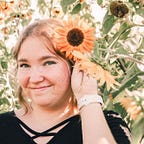Week 7 — Art Idea Essay — The Art of Place
It is hard to define the idea of a place. According to the Merriam-Webster dictionary, it could be a physical environment; an indefinite region or expanse; or even a particular region, center of population, or location. In the end, the idea of a place is a little different for each person. To some, it may be specific, but to others, it may be very broad. Nonetheless, the idea and sense of place affects day-to-day life by providing a sort of definition to the world we live in; creates unique cultures across the globe; and expresses identity, values, and opportunities through its versatility.
To begin, Amelia Bauer, an artist from Sante Fe, New Mexico, who currently resides in New York, has explored the idea of place, specifically in the deserts of Northern New Mexico and the forests of Central New York, through many of her works. She primarily examines these places from a mythological and historical position while exploring the effect of nature and humankind on the places we see today. Bauer’s works, mainly sculptures and photographs, gives insight into the culture of place, as humans have sought to define and control both the idea of place and the place itself. Another artist, Wijnanda Deroo from the Netherlands, explores the idea of place at a more personal level with her worldwide travels. She visits the interiors of different locations, including hotels, homes, factories, and more, all across the globe to capture the true essence of a place and how it differs from person to person through photography. Deroo is fascinated with the spaces that different people have created and the overall versatility of the sense of place. On the other hand, the sense of place in the eyes of scientists like Jennifer Adams, David Greenwood, Mitchell Thomashow, and Alex Russ has to do with how people see and define themselves in the world they live in. In the everchanging world we live in, a sense of place even has to do with taking care of the place itself and all it holds, including our fellow humans, animals, plants, and more.
A place can exist in numerous forms that are different for each person. People leading different walks of life may find a place somewhere that another person doesn’t and vice versa. A student may be able to find a sense of place both physically on-campus and digitally online, while other students may prefer one or the other. The same is true for working adults, as they may treat working in person or working online from home differently based on their concept of place. At the same time, making a place better or worse also depends on the person. One individual may find a place better when it involves other people, while someone different may like a place better when it’s isolated. The same place can even evoke different emotions and feelings based on the person’s sense of place. Because of that, being open to different types and locations of a place is detrimental in this day and age, especially since a place can now be found in both physical and digital formats. Adapting to a digital place can be challenging, but the overall growth of technology and social media specifically proves that a sense of place can successfully be found without traveling physically. It’s becoming more and more common to be able to find a sense of place in an online format, but that doesn’t it is better or worse than a physical place. A place in itself is defined by the person themself, making the overall idea of place a complicated subject.
In the 21st century, a place is what you make of it. Many people have a different definition of a place based on how they grew up, especially when you compare people who grew up with technology to those who didn’t. However, that doesn’t change the fact that a sense of place still affects us all. It affects our definitions of where we live or work, as well as how we see ourselves and others in this world. On top of that, it affects how we view culture and history having impacted the places we see. Years from now, these effects could still exist or they couldn’t. All that is clear is that the sense and idea of place is constantly changing and developing, and it is up to us as humans to be open to it and try and keep up with it. In my life, I see a place as somewhere I feel like I belong. In the next year, I can see that CSULB and Long Beach as a whole will become an important and endearing place. In my future, I hope that my sense of place will include the science community as I want to build a career as an environmental scientist. I also hope that my sense of place will include the world beyond my reach as I become a more responsible and knowledgeable global citizen. Overall, a sense of place may seem like a simple everyday subject, but it truly is a topic that should be explored in depth in order to learn more about ourselves and this place we all call home.
Sources:
